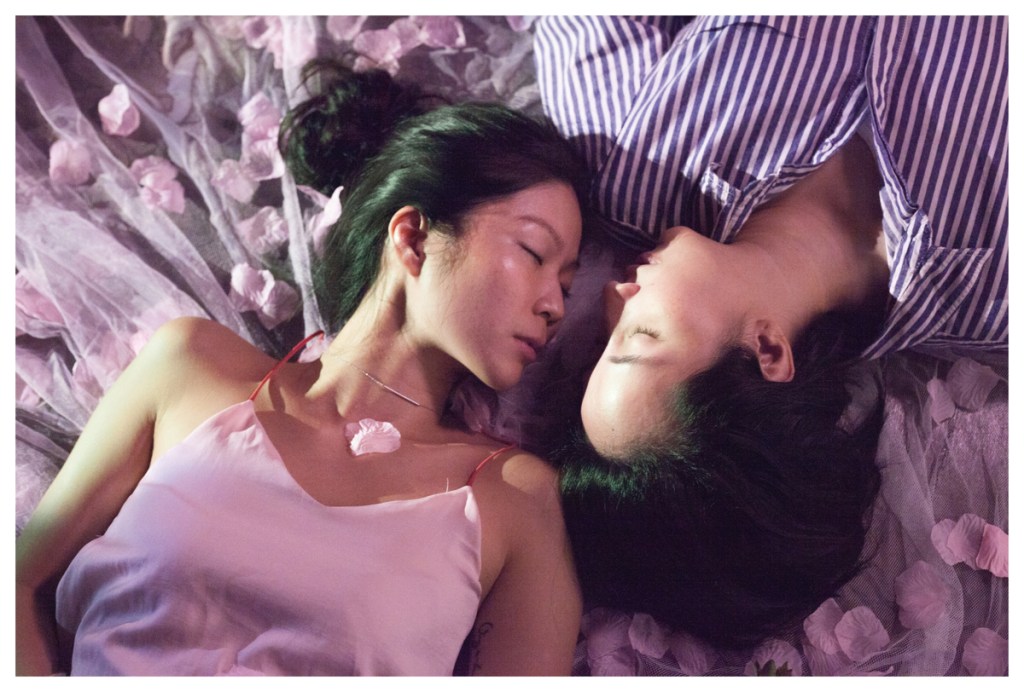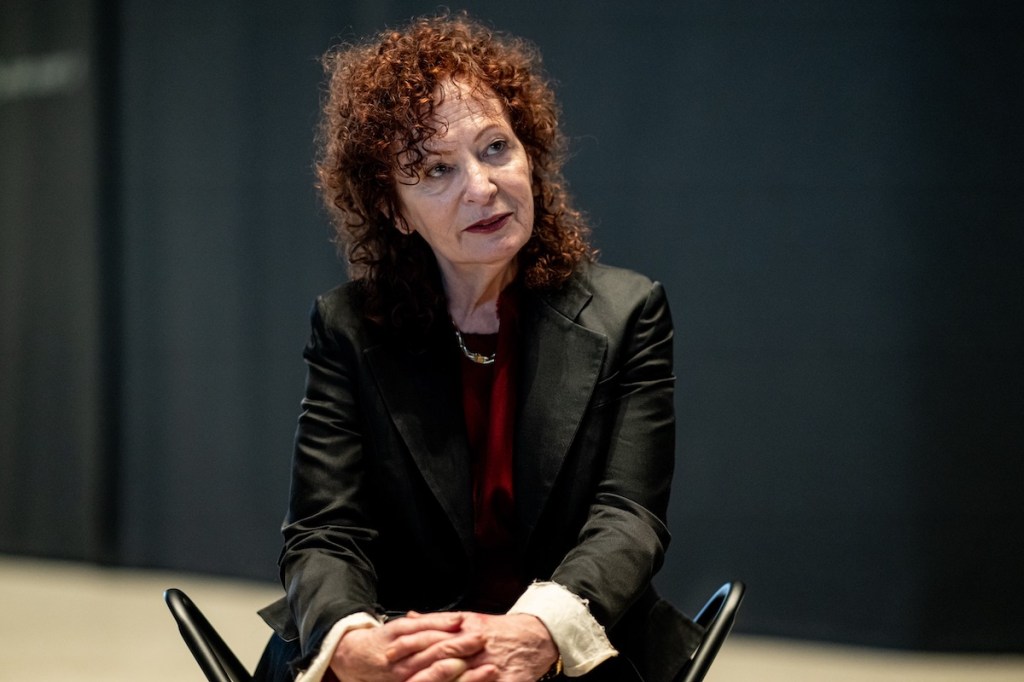What are the stakes of being visible? Singapore-born and Berlin-based artist Charmaine Poh explores the possibilities and dangers in her intimate portrayals of queer feminine bodies. In a series of photographs titled “How They Love” (2018–19), she invites collaborators to express their desires toward their romantic partners on their own terms. Poh captures couples in the considered and contained site of the photography studio, where they are free to use props and gestures to express themselves and their bonds with one another. Poh says she “was thinking about the surveillance of queer bodies in Singapore,” about the families who did not accept them. The studio is a safe environment where they can perform and embody their own intimacy with authenticity.
Poh confronted the lack of safe spaces in her 2021 film Kin, a 3-minute piece wherein three individuals narrate what family means to them, each choosing terms beyond the biological and favoring chosen kinship. Poh’s most recent work, What’s softest in the world rushes and runs over what’s hardest in the world (2024), follows up on these discussions by providing a glimpse into queer parenthood in Singapore. Same-sex unions are not legal in the country, and under Singaporean law, a child is seen as legitimate only if born or conceived within a “valid” marriage. This poses many challenges, including purchasing an apartment as a family unit under the public housing program.
Charmaine Poh: GOOD MORNING YOUNG BODY, 2021–23.
Courtesy the artist
In these two videos—both of which will feature in this year’s Venice Biennale—Poh takes a hybrid documentary approach, combining ethnography with performances she directs. In addition to recorded interviews, she constructs an environment for her subjects to perform in and express their identities and ideals in front of the camera lens.
Poh is interested in the politics of visibility and the representation of marginalized bodies as a means of asserting agency. But when we spoke over a video call, she also referenced Édouard Glissant’s concept of opacity, and spoke about maintaining the right to illegibility. She captures vulnerabilities in those interviews, while also shrouding the subjects in a soft pink glow.
This trade-off—between representation and opacity—comes from Poh’s experience as a child actor in a Singaporean TV series of the early 2000s, titled We Are R.E.M. This experience is the subject of works such as “THE YOUNG BODY UNIVERSE,” a series she began in 2021 that appropriates footage from that show. In the video GOOD MORNING YOUNG BODY (2023), recently on view in “Proof of Personhood: Identity and Authenticity in the Face of AI” at the Singapore Art Museum, Poh employs AI on found footage of her own prepubescent body to create a deepfake avatar of her past self as a response to the public gaze and scrutiny that befell her in 2002. Accompanied by a narration that references paparazzi treatment of a 16-year-old Britney Spears, Singapore’s introduction of the Protection from Harassment Act (POHA) in 2014, and Legacy Russell’s Glitch Feminism, an animated Poh revisits her own experiences as a young girl, touched by all that she’s learned since.
In a time when our image, whether created by us or by others, often spirals outside our control, Poh reclaims the agency that is hers, and insists on both the right to conceal and the right to be recognized. “To all the little girls,” she says at the end of the performance lecture, “may we all win.”










